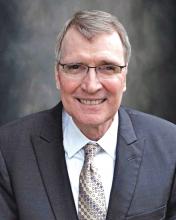Welcome to a new column about rural surgery! This quarterly feature will be a foray into the world of the rural surgeon by someone who has lived and worked in the rural milieu for many years. I want to bring to you a view of rural surgery from the “front lines.”
“Rural surgery: A view from the front lines” will be the second series about this timely topic published by ACS Surgery News. The first, “The Rural Surgeon” appeared in 2015 and was coordinated by Philip Caropreso, MD, FACS, a prominent and eloquent advocate for rural surgeons. The series was a great success. I was prevailed upon to begin another series. The goal for the new series is to delve into not only the important issues that rural surgeons face, but also to convey to readers who practice far from rural America what goes on in a rural practice.
I am a general surgeon practicing in a rural community. After completing my general surgery residency, I moved to Alpena, Mich., in 1989 and have been there ever since. Alpena is a town of 11,000 in a county of 30,000 in the northeast portion of the lower peninsula of Michigan. There is one hospital in our county, Mid-Michigan Medical Center–Alpena, a 139-bed facility. Ours is one of the most geographically isolated hospitals in Michigan. The closest hospital larger in size is 98 miles away.I’ve been fortunate to be active in the leadership of the Michigan Chapter of the ACS and, through this association, I have learned how surgeons can impact care at the state level. I recently completed a 6-year term as an ACS Governor. As a governor, I’ve had the wonderful opportunity to serve as a member of the ACS Advisory Council for Rural Surgery, where I have learned about the many complex and unique challenges that U.S. rural surgeons confront. So I have my own lived experience as a rural surgeon and some exposure to what is happening in rural practices across the country, as well.
One thing I have learned is that not all rural surgery practices are the same. The work can depend on the size of the institution and the community. Surgical literature describes surgical practices in communities with a population of 10,000 or fewer as small rural surgical practices. In this setting, the hospital and staff level will be quite small. There are not likely to be cardiologists, pulmonologists, or many other medical specialists. Anesthesia may be provided by certified registered nurse anesthetists rather than anesthesiologists. A surgeon in a small rural surgical practice will do “bread and butter” elective cases such as hernia repairs, cholecystectomies, breast cancer surgery, and colectomies. Endoscopy is a large part of a rural surgeon’s practice since there would likely not be a gastroenterologist on staff. There may no urologist, ob.gyn., or orthopedist on staff, so a rural surgeon in this setting may do some urologic and orthopedic surgery and may provide C-section coverage.
A rural surgeon here may likely be the only general surgeon or may have one partner. These surgeons have a very high on-call burden. Because of all of these factors, surgeons in this setting will tend to be somewhat selective in which patients they choose to operate on. Elderly patients or those with multiple comorbidities may more likely be referred to a larger center.
Surgical practices in communities of 10,000-50,000 population, such as where I practice, are described as large rural surgical practices. The hospital in these communities will be larger and will offer more services. Our hospital has a cancer center, wound care clinic, and provides dialysis services. The medical staff will have more medical specialists. Our hospital has a pulmonologist, medical oncologist, radiation oncologist, neurologist, and a pathologist. Other specialties include cardiology, radiology, and pediatrics.

